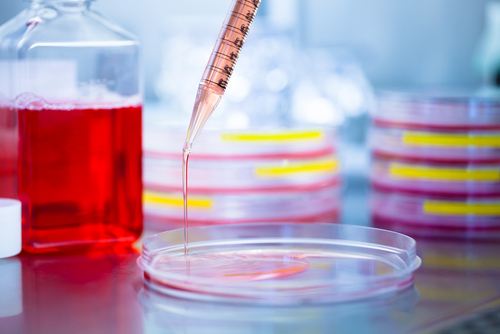Arimoclomol Restores Glucocerebrosidase Activity, Localization in Gaucher Disease
Written by |

The small molecule arimoclomol — which is already in Phase 2/3 clinical testing — improves the folding and maturation of abnormal glucocerebrosidase across multiple cell models of Gaucher disease, including neuronopathic ones, which have no approved treatments available, a study shows.
The study, “The heat shock protein amplifier arimoclomol improves refolding, maturation and lysosomal activity of glucocerebrosidase,” was published in EBioMedicine.
Gaucher disease is a lysosomal storage disorder resulting from a deficiency in the glucocerebrosidase enzyme, which causes the deposition of a fat molecule, glucocerebroside, in certain cells and organs.
The condition is primarily caused by mutations in the GBA gene — which codes for glucocerebrosidase — that impair the protein from acquiring its normal 3D conformation (a process called folding), causing its premature degradation.
The correct protein folding is dependent on proteins called molecular chaperones. These bind a newly made, immature protein and shape it into its functional 3D conformation. Studies suggest that increasing the levels of these molecules can, at least in part, rescue the folding and function of glucocerebrosidase.
Orphanzyme’s arimoclomol is a small molecule that increases levels of the HSP70 molecular chaperone — required for the proper folding of glucocerebrosidase — and other chaperones of the same family.
The agent is being evaluated in a Phase 2/3 trial for Niemann-Pick Disease Type C (NCT02612129) — like Gaucher, another lysosomal storage disorder — and trials in neurodegenerative diseases have shown it can safety enter the brain and reduce disease symptoms.
Gaucher disease is clinically divided into three types, depending on how it manifests. While its most common form — Gaucher disease type 1 or non-neuronopathic (without nervous system involvement) — can be treated with enzyme replacement therapy and substrate reduction therapy, there are no current treatments for types 2 and 3 Gaucher, which involve neurological symptoms.
Researchers in Italy and Denmark set out to determine the impact of arimoclomol on the activity of glucocerebrosidase in skin cells (fibroblasts) isolated from Gaucher patients with various mutations in the GBA gene, and in a human neuronal model of Gaucher.
The team found that arimoclomol increased the amount of glucocerebrosidase across all GBA-mutant cells, including those associated with neuronopathic forms of Gaucher disease. The treatment also increased glucocerebrosidase activity in all three disease subtypes to levels that replicated those seen with enzyme replacement therapy.
Interestingly, while unfolded glucocerebrosidase is degraded before reaching its right location — lysosomes, the cell’s waste disposal system — arimoclomol increased the amount of glucocerebrosidase correctly localized in lysosomes.
The effects were then replicated in neuronal cells derived from patients with neuronopathic and non-neuronopathic Gaucher disease, where arimoclomol also increased the amount and activity of glucocerebrosidase.
“We demonstrate that arimoclomol amplifies the production of disease mechanism-relevant molecular chaperones of the HSP70 family and improves mutant [glucocerebrosidase] maturation and function across major neuronopathic and non-neuronopathic genotypes in both human primary GD fibroblasts as well as in a neuronal cellular model of the disease,” researchers stated.
“Our results demonstrate that arimoclomol is a [molecular chaperone] amplifying small molecule that may be useful for the treatment of Gaucher disease including its neuronopathic forms, which have no approved treatments available,” they said.



